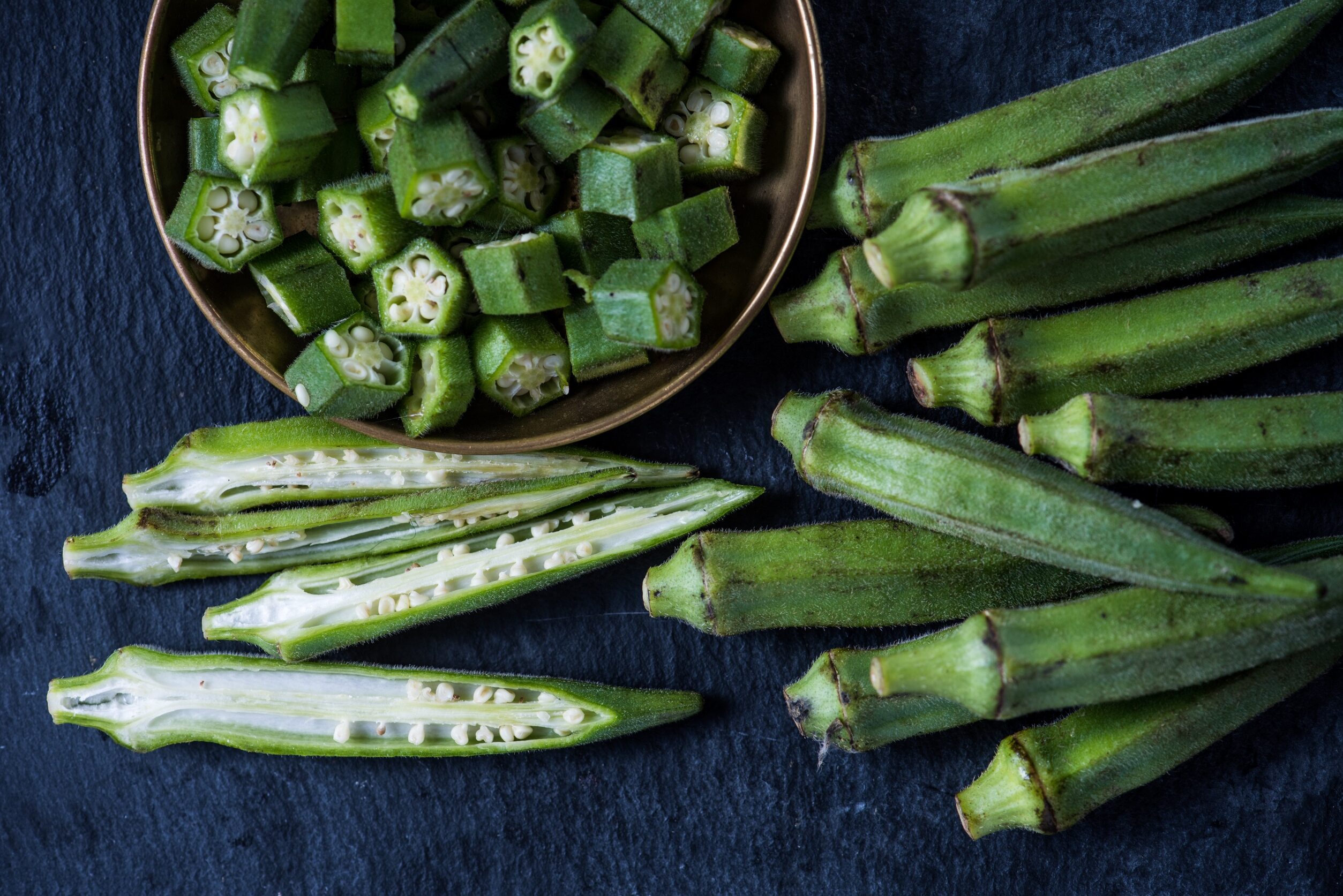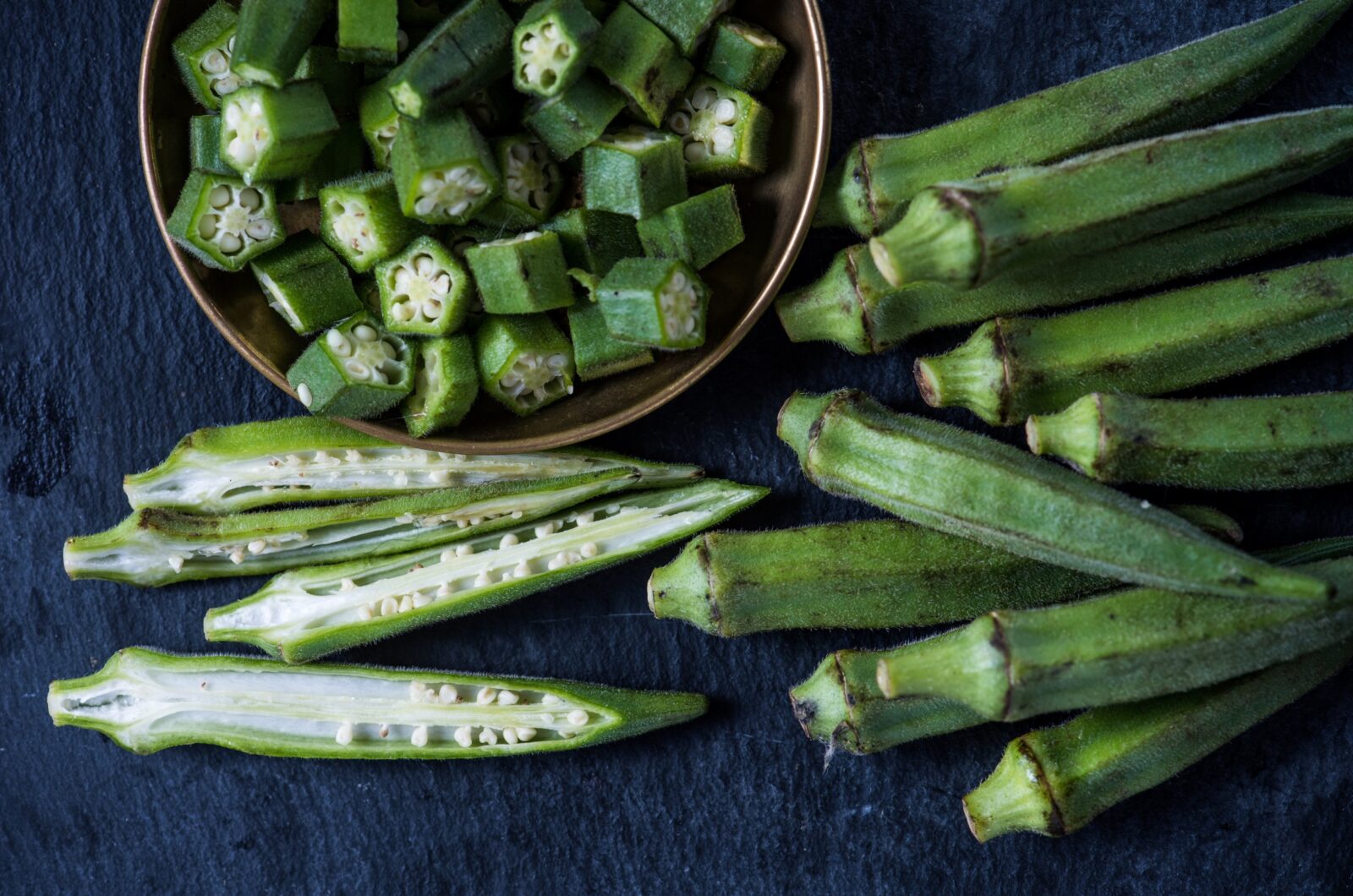Check this out!
Okra is a humble yet powerful staple in Southern and global kitchens. Known for its distinct pod shape and natural thickening ability, it’s beloved in gumbos, stews, and sautéed vegetable dishes. Pressure canning okra in water preserves your summer harvest for year-round meals without relying on freezer space. While canned okra loses its crisp texture, it keeps its earthy flavor and nutritional value—making it a versatile pantry staple for soups, stews, and quick sautés.
(I sometimes use affiliate links in my content. This will not cost you anything but it helps me offset my costs to keep creating new canning recipes. Thank you for your support.)
By Diane Devereaux | The Canning Diva®
Last updated: September 11, 2025
Let’s Talk Okra
Okra (Abelmoschus esculentus) was first cultivated in Africa and South Asia before spreading worldwide. It arrived in the Americas through the transatlantic slave trade and quickly became a cornerstone of Southern cuisine. Gumbo, whose name traces back to West African languages, wouldn’t be the same without okra’s thickening mucilage.
Okra is a humble yet powerful staple in Southern and global kitchens. Known for its signature pod shape and thickening abilities, okra is beloved in stews, soups, and sautéed dishes. Home canning okra in water lets you preserve this summer harvest for use all year long, but while the flavor holds strong, the crisp texture does not. And that’s okay, this pantry staple still delivers on taste, nutrition, and versatility. Home canning okra gives you access to a seasonal vegetable all year long—without relying on your freezer. Whether you add it to hearty stews or quick veggie sautés, water-packed okra is a reliable, shelf-stable ingredient that enhances meals with little effort.

Nutritional Benefits of Okra
Okra is high in fiber, vitamin C, and antioxidants. It contains folate and vitamin K, making it a nutrient-rich food for supporting digestion, bone health, and immune function. Its unique mucilage—a thick gel-like substance—is excellent for naturally thickening soups and stews, while also soothing the digestive tract.
Okra is often called a “superfood” in Southern kitchens and beyond because of its dense nutritional profile:
- Fiber: A single cup of okra provides about 3 grams of dietary fiber, which supports healthy digestion and helps regulate blood sugar levels. The soluble fiber in okra also aids in lowering cholesterol.
- Vitamin C: One serving offers more than 25% of the daily recommended intake, boosting immune health and aiding collagen production for healthy skin and joints.
- Folate: Essential for cell growth and repair, folate is especially beneficial for pregnant women and overall cardiovascular health.
- Vitamin K: Supports bone health and proper blood clotting.
- Antioxidants: Okra is rich in polyphenols like flavonoids and isoquercetin, which may reduce inflammation and protect against chronic disease.
- Mucilage: The thick, gel-like substance in okra not only thickens soups and gumbos naturally but also acts as a prebiotic, feeding beneficial gut bacteria.
By pressure canning okra, you retain much of its vitamin content and beneficial fiber, giving you a shelf-stable ingredient that nourishes long after harvest.
Using Pressure Canned Okra in Home Cooking
Canned okra is soft, savory, and ready to use straight from the jar. While it won’t have the crispness of fresh pods, it excels in cooked applications where its texture works as a natural thickener.
Stovetop Ideas
- Classic Gumbo or Stew: Add canned okra in the last 10 minutes of cooking. Its mucilage thickens the broth, giving the dish its authentic Southern feel.
- Quick Southern Sauté: Drain the okra and fry lightly in olive oil or bacon drippings with diced onions, garlic, and tomatoes. Serve as a side dish alongside cornbread or grilled meat.
- Veggie Skillet Toss: Combine canned okra with bell peppers, corn, and black beans for a fast, fiber-rich side dish.
- Okra Stir-Fry: Toss into a skillet with soy sauce, ginger, and sesame oil for a quick global twist.
Oven-Baked Ideas
- Okra Casserole: Mix canned okra with cornmeal, eggs, and shredded cheese, then bake until golden for a hearty side dish.
- Baked Tomato-Okra Gratin: Layer drained okra with fresh or canned tomatoes, garlic, and breadcrumbs. Bake until bubbly and crisp on top.
- Sheet Pan Roast (Shortcut): While fresh okra roasts beautifully, you can drain canned okra, pat it dry, season, and toss with breadcrumbs before baking for a slightly crisp side.
Pantry Bonus
Because it’s already cooked, canned okra cuts down prep time. Simply drain, season, and add to your recipe. While it won’t be crisp after canning, it remains a deeply satisfying ingredient in cooked meals—saving you time and adding that unmistakable earthy, Southern flair to your favorite dishes.
Pressure Canning Okra in Water Recipe
This pressure canning okra in water recipe preserves tender pods for year-round use in soups, gumbos, and sautés. While the texture softens, the flavor, nutrition, and Southern flair remain intact in every jar.
Yield: About 7 quarts or 14 pints
Ingredients
- 12 to 16 pounds of fresh okra
- Boiling water
- Pickling or canning salt (optional)
Instructions
- Wash the okra thoroughly. Trim stems without cutting into the pod. Slice the pods into 1-inch rounds or leave whole, depending on your preference.
- Raw pack okra into jars, leaving a 1-inch headspace. Add 1 tsp salt per quart or ½ tsp per pint, if desired, for flavor.
- Pour boiling water over okra maintaining the 1-inch headspace. Remove any trapped air pockets and add more water to keep the headspace if needed.
- Wipe rims with a damp cloth dipped in vinegar. Apply lids and screw bands and hand tighten.
- Place jars in a pressure canner with the recommended amount of water. Process pints for 25 minutes at 10 PSI or according to your elevation and canner type. If processing in quarts, process for 40 minutes.
- Allow canner to return to zero pressure naturally. Remove canner lid and allow jars to rest for 10 minutes before removing them to cool.
Pro Tip: For best flavor and texture, use small to medium pods, no longer than 4 inches. Overgrown okra becomes tough and fibrous—even after canning.
People Often Ask
A: Yes. Pickled okra can be safely water bath canned thanks to the added vinegar brine and spices.
A: Canned okra softens during processing, but when added to soups and stews, its mucilage helps thicken the dish without feeling overly slimy.
Yes. Okra can be safely pressure canned in vegetable, chicken, or beef broth instead of water. Using broth infuses extra flavor and works well if you plan to add the okra to soups, gumbos, or casseroles.
About the Author:
Diane Devereaux, The Canning Diva®, is an internationally recognized food preservation expert, author, and educator with over 30 years of home canning experience. She’s the author of multiple top-selling canning books and teaches workshops across the U.S. Learn more at TheCanningDiva.com.




